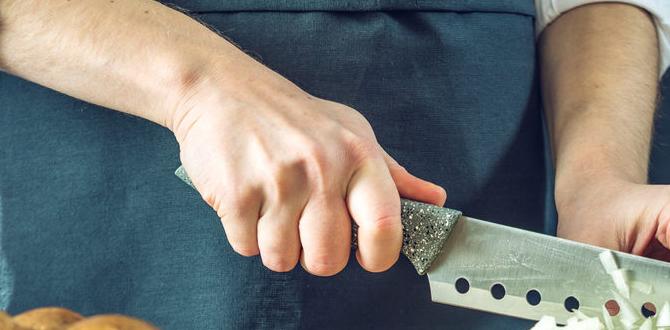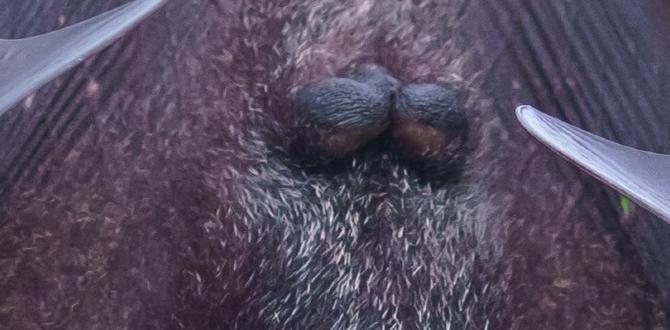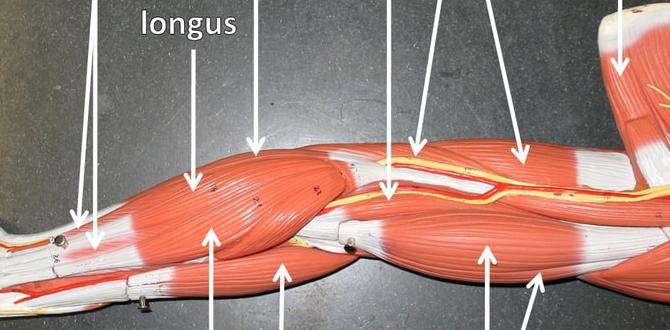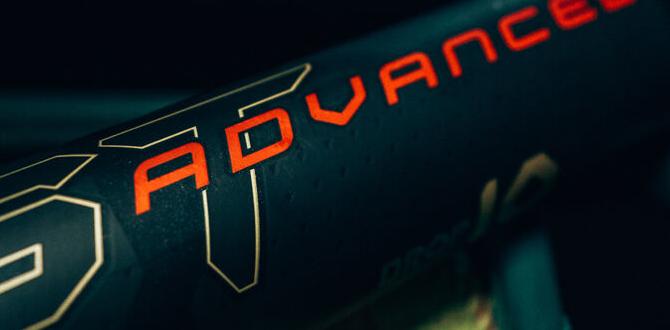Quick Summary: Get a perfect, safe fit for your Nike catcher’s throat guard. A custom fit helps prevent injury and keeps you comfortable behind the plate, so you can focus on the game. Learn how to ensure yours is just right!
Nike Catchers Throat Guard: Essential Custom Fit for Every Player
Ever felt like your catcher’s throat guard is a little… off? Maybe it shifts too much, or you worry it’s not offering the best protection. It’s a common feeling! As a catcher, your throat guard is a crucial piece of safety gear, and a snug, custom fit makes all the difference. It’s not just about comfort; it’s about keeping you in the game and protected. In this guide, we’ll walk through exactly how to achieve that essential custom fit with your Nike catcher’s throat guard, ensuring you feel secure and confident behind home plate.
Why a Custom Fit Matters for Your Throat Guard
Think about it: behind the plate, you’re in the line of fire for foul tips, errant pitches, and even accidental collisions. Your catcher’s gear is designed to absorb impact, and the throat guard is your last line of defense for a very vulnerable area. A loose-fitting throat guard can:
- Shift during plays, exposing your neck to dangerous impacts.
- Cause discomfort, distracting you from calling pitches or blocking balls.
- Provide a false sense of security, leading to a higher risk of injury.
On the flip side, a properly fitted Nike catcher’s throat guard acts like a second skin, staying put no matter how intense the game gets. It works seamlessly with your mask and helmet, providing targeted protection where you need it most.
Understanding Nike Catcher’s Throat Guard Features
Nike, known for its innovative sports equipment, designs throat guards with performance and protection in mind. While specific models might vary, several key features aim to contribute to a great fit:
- Durable Materials: Typically made from high-impact plastics or composites designed to withstand repeated blows.
- Ergonomic Design: Shaped to follow the natural contours of a catcher’s neck and chin area.
- Secure Attachment Systems: Usually features straps or clips designed to attach firmly to your catcher’s mask.
The goal is to achieve a fit that is protective without being restrictive. This balance is key to optimal performance and safety.
Getting the Perfect Fit: A Step-by-Step Guide
Achieving that “just right” fit for your Nike catcher’s throat guard is a straightforward process. It involves a few simple checks and adjustments while you’re wearing your gear.
Step 1: Gather Your Gear
Before you start, make sure you have the essential items ready:
- Your Nike catcher’s mask
- Your Nike catcher’s throat guard
- A mirror (if you’re fitting it yourself without a coach or teammate)
Step 2: Attach the Throat Guard to Your Mask
Most Nike catcher’s throat guards attach directly to the frame of your mask. Follow the specific attachment points indicated by the design. This usually involves clipping or sliding the guard into designated slots on the mask.
- Check Attachment Points: Ensure the guard clicks or locks securely into place. You shouldn’t feel any significant wiggle room at the attachment points.
- Orientation: Make sure the guard is facing the correct direction to protect your throat and chin.
Step 3: Put On Your Helmet and Mask
Now, put on your catcher’s helmet with the mask and the attached throat guard. This is crucial because the mask sits differently on your face when the helmet is on and secured.
Step 4: Check for Comfort and Coverage
With the mask and guard on, adjust the helmet straps for a snug fit.
- Chin Clearance: Does the bottom edge of the throat guard rest comfortably against the lower part of your chin? It shouldn’t be digging in, but it also shouldn’t leave a large gap.
- Neck Coverage: Ensure the guard extends far enough down to protect the vulnerable parts of your throat and upper neck area.
- Breathing Space: You should be able to breathe comfortably without the guard feeling like it’s constricting your airway.
Step 5: Test for Movement
Now, simulate game-like movements to see how the guard holds up. This is where you truly test the “custom fit.”
- Nodding: Nod your head up and down. Does the throat guard stay in place?
- Shaking: Gently shake your head side to side. Does it remain stable?
- Looking Around: Turn your head as if you’re following a pitch or looking at runners. The guard should move with you, not lag behind or shift independently.
- Leaning Forward: Simulate a catching stance by leaning forward. The guard should maintain its position and not slide down your chest.
Step 6: Identify Areas for Adjustment
Based on your testing, you might find areas that need tweaking. Most modern throat guards are designed to offer a pretty universal fit, but subtle adjustments can enhance it.
- If it feels too tight: Ensure all straps on your helmet are loosened appropriately, and that the guard isn’t being forced into an unnatural position by an ill-fitting mask.
- If it feels loose: Double-check that the guard is fully clipped or slotted into the mask. Sometimes, a slight nudge or re-seating can fix it. Also, ensure your helmet is snug – a loose helmet can cause the mask (and therefore the throat guard) to move around more.
- If there’s a gap: While most guards are universal under certain masks, sometimes pairing with a specific mask model might create slight gaps. For a truly integrated feel, consider ensuring your mask and throat guard are from compatible lines within Nike or brands known to work well together. For more advanced customization, sometimes custom padding can be added with athletic tape, but this should be done cautiously and with expert advice to ensure it doesn’t compromise safety certifications.
Advanced Fit Considerations and Common Issues
While a standard fit check usually does the trick, some players might encounter specific challenges. Understanding these can help you troubleshoot.
Mask-Throat Guard Compatibility
Not all catcher’s masks and throat guards are created equal, even within the same brand. While Nike aims for broad compatibility, certain mask designs might interact differently with specific throat guard models. If you’re experiencing consistent issues with a particular combination, it might be worth researching user feedback on how well your mask and throat guard pair together.
For example, some masks have wider frames, while others have more contoured designs. These differences can affect how snugly a throat guard’s attachment points seat.
The Role of Helmet Fit
This cannot be stressed enough: the fit of your catcher’s helmet is paramount to the stability of your mask and, consequently, your throat guard. A helmet that is:
- Too loose: Will allow the mask to shift independently of your head movements, creating instability.
- Too tight: Can be uncomfortable and may even slightly alter the shape of the mask it’s attached to, affecting the throat guard’s seating.
Always ensure your helmet fits snuggly, with no significant up-and-down or side-to-side movement when you shake your head. Adjustment is usually done via internal padding or chin straps. For guidance on helmet fitting, resources like MLB’s youth gear guide offer excellent general advice.
Personal Anatomy and Preferences
We’re all built a little differently! Some players have longer necks, some have wider jaws. Your individual anatomy plays a role in how a standard throat guard feels and fits.
- Jawline: The guard should cup your chin comfortably without pressing too hard or leaving a gap.
- Neck Length: Ensure adequate coverage without the guard feeling like it’s obstructing your view or movement.
If a standard fit still feels slightly off, don’t despair. Sometimes, minor layering of athletic tape can create a slightly more customized feel, but this should be done sparingly and with an understanding that it shouldn’t compromise the guard’s primary function or the integrity of the mask attachment. Always prioritize safety over minor comfort adjustments.
Nike Catchers Throat Guard Custom Fit: Troubleshooting Table
Here’s a quick reference for common issues and solutions:
| Problem | Possible Cause | Solution |
|---|---|---|
| Throat guard shifts during play | Helmet is too loose; Throat guard not fully attached; Mask frame instability | Adjust helmet for a snug fit; Re-seat throat guard firmly; Ensure mask is securely attached to helmet |
| Discomfort or pressure points | Guard is too small for facial structure; Mask/guard combination is awkward; Helmet is too tight | Check for alternative guard shapes (if available); Ensure mask fits face well; Loosen helmet |
| Gap between guard and chin/neck | Guard shape doesn’t match face; Mask design creates distance | Ensure guard is properly positioned; Consider if it’s the right guard for your specific mask model (check reviews/manufacturer notes for compatibility) |
| Restricts breathing or movement | Guard is positioned too high; Helmet/mask is too low; Guard is excessively large | Adjust guard position downwards slightly; Adjust helmet/mask fit; Check if guard is the correct size for your mask |
Nike Catchers Throat Guard Features & Benefits Comparison
Key Features of Nike Catchers Throat Guards
- High-Impact Protection: Designed to absorb force from foul tips and pitches.
- Secure Attachment: Integral clips or slots for easy and stable mounting onto Nike catcher’s masks.
- Ergonomic Shaping: Contoured to fit the natural curve of the neck and jawline for comfort and coverage.
- Lightweight Construction: Minimizes added weight, ensuring agility behind the plate.
- Durable Materials: Built to withstand the rigors of a baseball season.
Benefits of a Properly Fitted Nike Throat Guard
- Enhanced Safety: Minimizes risk of serious injury to the throat and neck area.
- Improved Focus: When gear is comfortable and secure, players can concentrate better on the game.
- Greater Confidence: Knowing you are well-protected allows for more aggressive play and better performance.
- Comfort During Play: A good fit prevents chafing or pinching, crucial for long games and practices.
- Longevity of Gear: A well-fitted guard is less likely to be stressed in ways that could lead to premature wear or damage.
Essential Care and Maintenance for Your Throat Guard
To ensure your Nike catcher’s throat guard continues to provide optimal protection and a custom feel, proper care is key. Treat it like any other important piece of equipment:
- Clean After Use: Sweat and dirt can degrade materials over time. Wipe down your throat guard with a damp cloth after games and practices. Mild soap can be used if necessary, but rinse thoroughly.
- Air Dry: Never store your gear while it’s wet or damp. Allow the throat guard to air dry completely before putting it away to prevent mildew and material breakdown.
- Inspect Regularly: Periodically check for any cracks, chips, or loose attachment points. Any damage could compromise its protective capabilities. If you notice significant damage, it’s time to consider a replacement.
- Store Properly: Keep your gear in a well-ventilated bag or on a shelf. Avoid extreme temperatures, which can also damage plastics and composites.
Following these simple maintenance steps will help ensure your Nike catcher’s throat guard remains a reliable part of your protective equipment for seasons to come.
Frequently Asked Questions (FAQ)
Q1: How do I know if my Nike catcher’s throat guard is the right size?
A1: A properly sized throat guard should cup your chin comfortably without leaving a large gap, and extend far enough down to protect your upper neck and throat. It should feel secure when attached to your mask and not shift significantly when you move your head.
Q2: Can I use a Nike throat guard with a non-Nike catcher’s mask?
A2: While many throat guards are designed with universal attachment points, compatibility can vary. Nike throat guards are designed to work best with Nike masks. It’s always recommended to try fitting them together if possible, or check product descriptions and reviews for known compatibility or issues.
Q3: What should I do if my throat guard feels too loose after attaching it?
A3: First, double-check that the guard is clicked or locked firmly into all designated points on the mask. Also, ensure your catcher’s helmet is snug on your head. A loose helmet can lead to the mask and throat guard shifting. If it persists, the guard might not be the best fit for your specific mask.
Q4: How often should I replace my catcher’s throat guard?
A4: You should replace your throat guard if you notice any cracks, significant wear, or if its protective integrity seems compromised. Even without visible damage, most manufacturers recommend replacement after a few seasons of regular use as materials can degrade over time.
Q5: Is it okay to modify my throat guard for a better fit?
A5: Modifications are generally not recommended, as they can compromise the safety certifications and protective capabilities of the gear. For the best fit, try adjusting your helmet’s fit or ensuring the guard is the correct model for your mask. If a standard fit isn’t working, it might be time to explore different mask or throat guard options.
Q6: How does a custom fit prevent injuries?
A6: A custom, snug fit ensures the throat guard stays in its protective position during impacts. If it’s loose, it can shift, leaving your throat exposed. A well-fitting guard distributes impact force effectively and stays in place to offer maximum protection when you need it most.
Conclusion
As a catcher, your throat guard is more than just an accessory; it’s a vital piece of safety equipment. Achieving that essential custom fit with your Nike catcher’s throat guard is straightforward and incredibly important for your protection and confidence on the field. By understanding how it attaches, testing it with your helmet and mask, and performing regular checks, you ensure it performs its job effectively. Remember, a secure, comfortable fit allows you to focus on making great plays and calling the game, not on gear that might be shifting or feeling awkward. Keep your Nike gear well-maintained, understand its importance, and you’ll be ready to block, frame, and defend home plate with the best protection possible.




